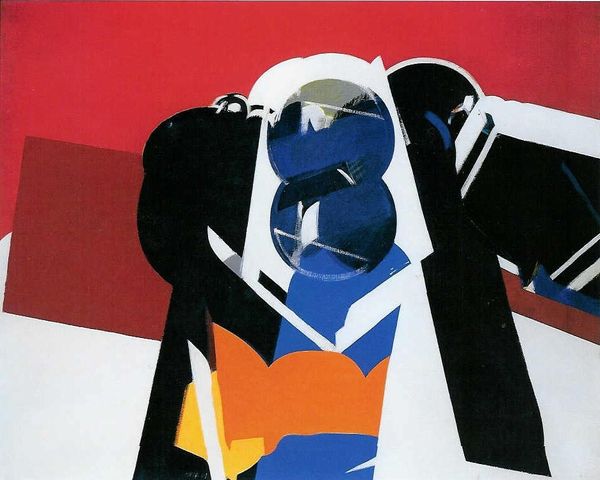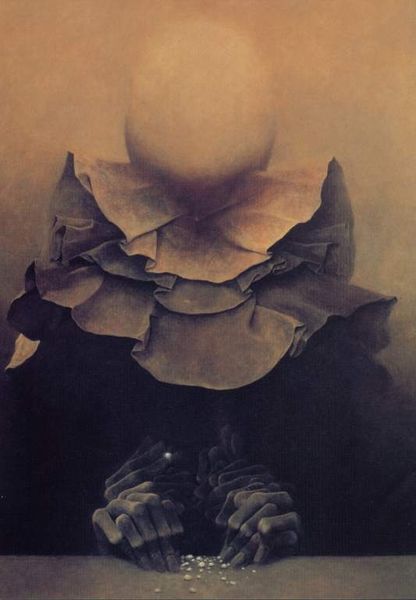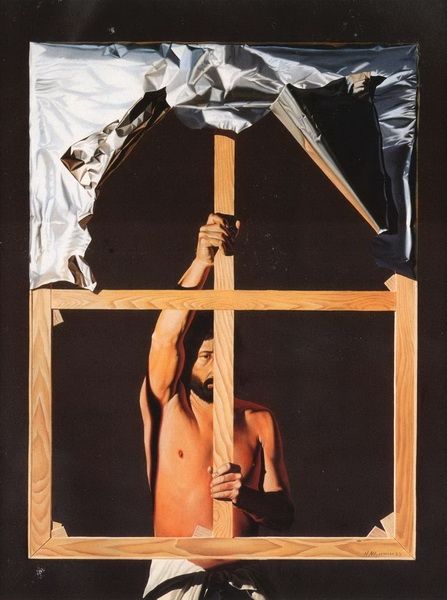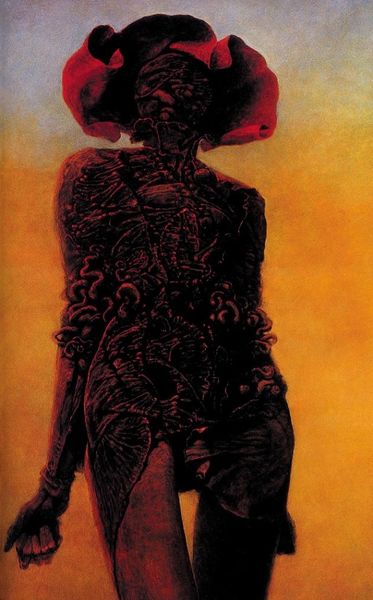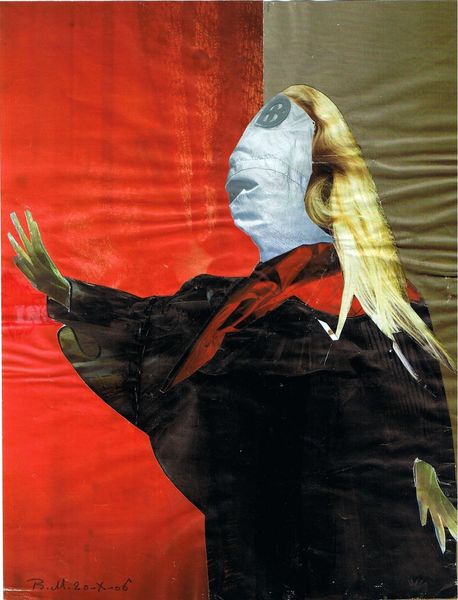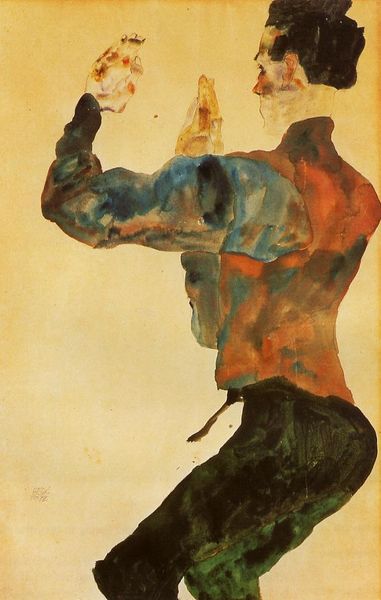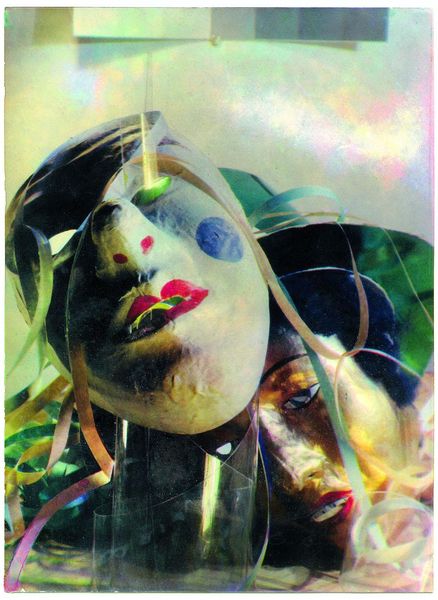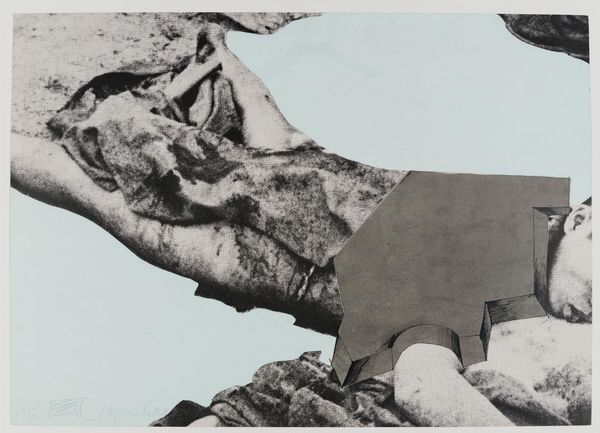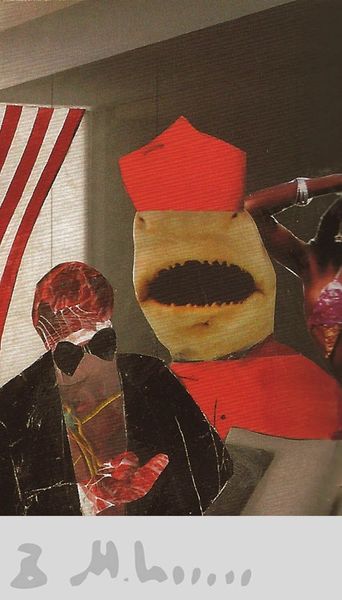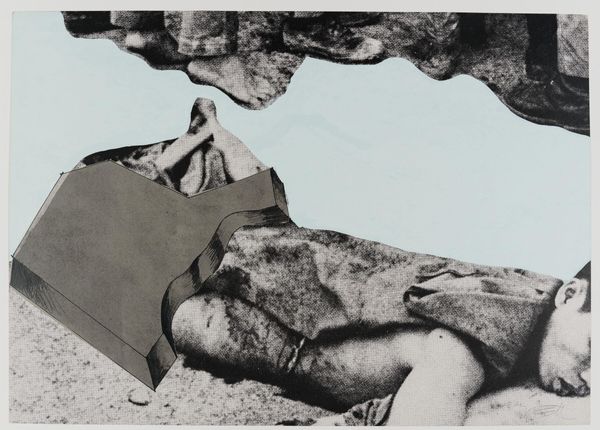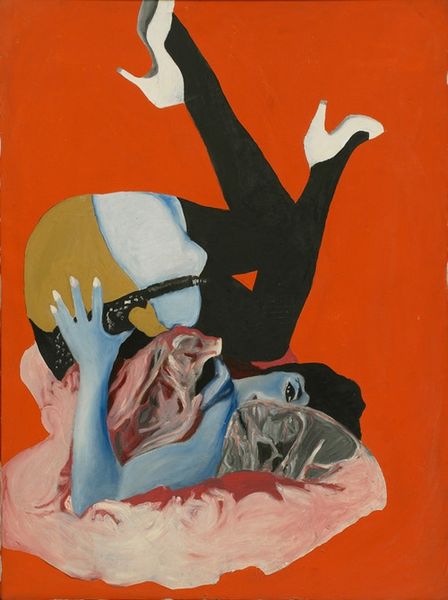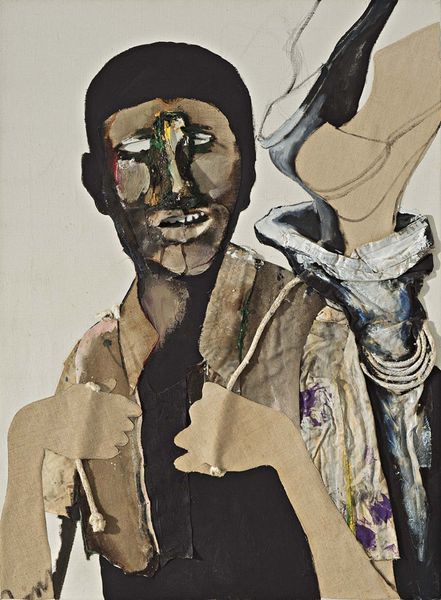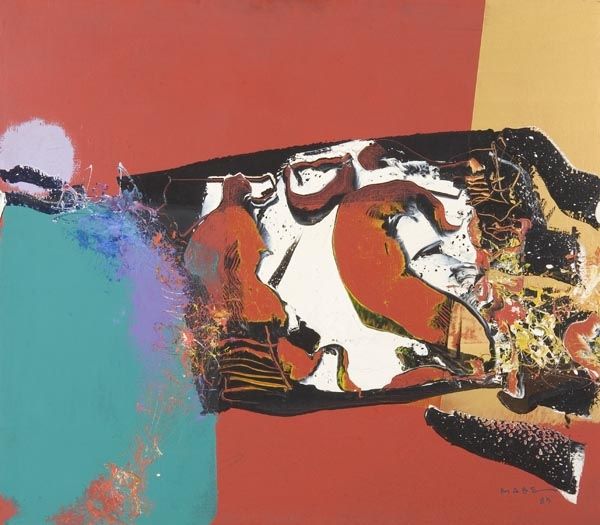
Dimensions: unconfirmed: 235 x 165 mm
Copyright: © John Stezaker | CC-BY-NC-ND 4.0 DEED, Photo: Tate
Curator: John Stezaker’s Untitled collage at Tate Britain, with its approximate dimensions of 235 by 165 mm, immediately strikes me as unsettling. Editor: The stark juxtaposition of the moth obscuring a woman’s face is definitely jarring. It draws attention to the physicality of collage itself, the layered paper and the act of cutting. Curator: Exactly. Think of how mass media influences our perception. Stezaker sources these images from vintage film stills, disrupting their intended narratives. The moth might symbolize transformation or something darker. Editor: The use of found imagery is fascinating here, the pre-existing printing techniques influence how we consider labor, the moth seemingly devouring the woman’s identity while also revealing something about the nature of image-making. Curator: The act of obscuring, the politics of erasure that were circulating during the period the work was created are all key to how the work makes meaning. I’m left wondering about the broader implications of Stezaker's choices. Editor: It's the physicality of collage and the haunting effect of disrupted images that lingers with me.
Comments
tatebritain 6 months ago
⋮
http://www.tate.org.uk/art/artworks/stezaker-untitled-t12344
Join the conversation
Join millions of artists and users on Artera today and experience the ultimate creative platform.
tatebritain 6 months ago
⋮
Untitled is a collage combining three separate images. The principal image is a colour photograph of a film actress taken in the 1940s or 1950s. Her face has been excised by the silhouetted figure of another woman cut out of the paper on which the portrait was printed. The space of the silhouette is filled with a photographic reproduction of a moth on a branch. As is usual in a portrait, the photographed actress looks at the viewer but as a result of the artist’s intervention only her cheek, a few eyelashes and a sliver of eyebrow are visible on her right side and her jaw and ear on her left. Her right shoulder and part of her forearm are raised – she appears to be leaning on something. Stezaker’s collage obscures all the parts of her normally needed to read a portrait and in this sense the silhouetted figure operates like a mask – a concept central to Stezaker’s work (see Masks XI, XIII and XIV, 2005-6, T12345-7). The artist derived the image of the moth from an early colour photogravure, printed in a volume of The Natural World (a pre-war publication Stezaker found in a second hand book shop). The colours of its unusual markings – a delicate pink, white and two shades of brown – echo what we can see of the film actress’s skin tones, dark brown hair and white blouse or dress. The moth’s patterning covers most of the actress’s face with the uncanny effect of evoking a strange disfigurement. The artist has commented that the image reminds him ‘of that combination of the insectile and Victorian interiors in A.S.Byatt’s Morpho Eugenia (a short story printed in Angels and Insects, London 1992)’ (letter to the author 27 October 2007).
